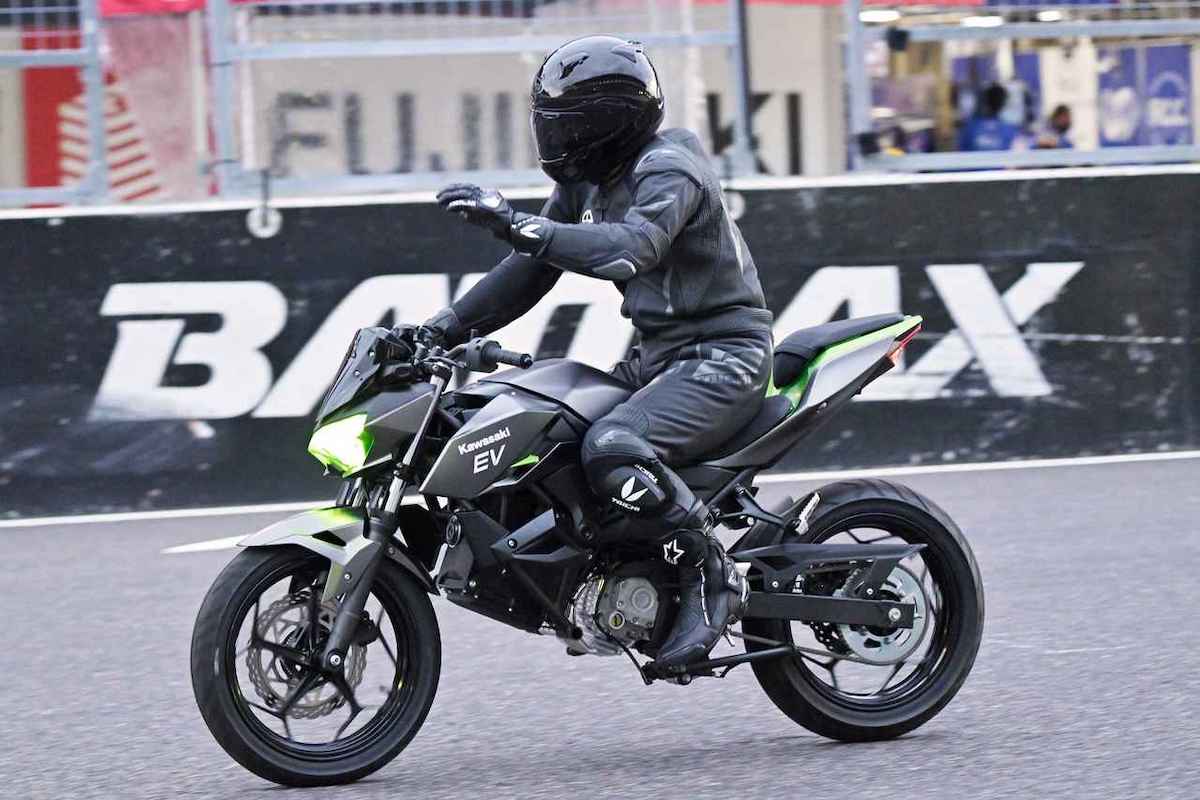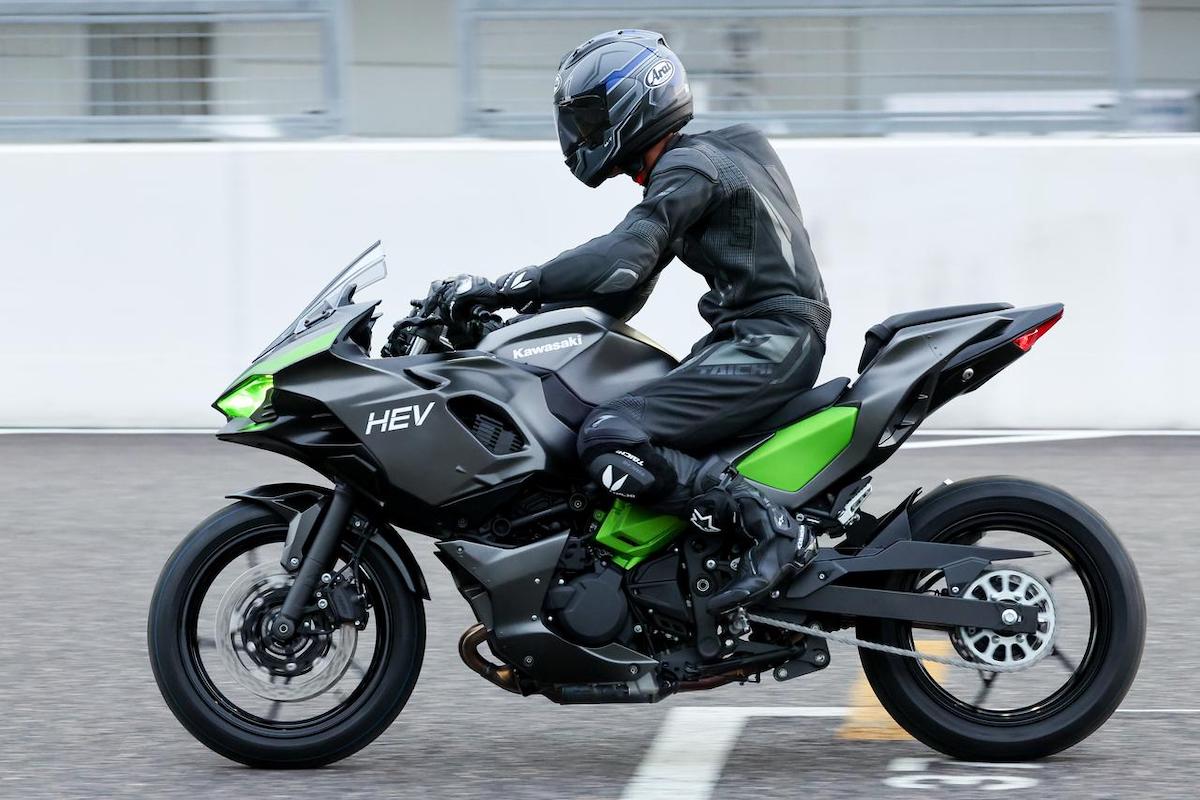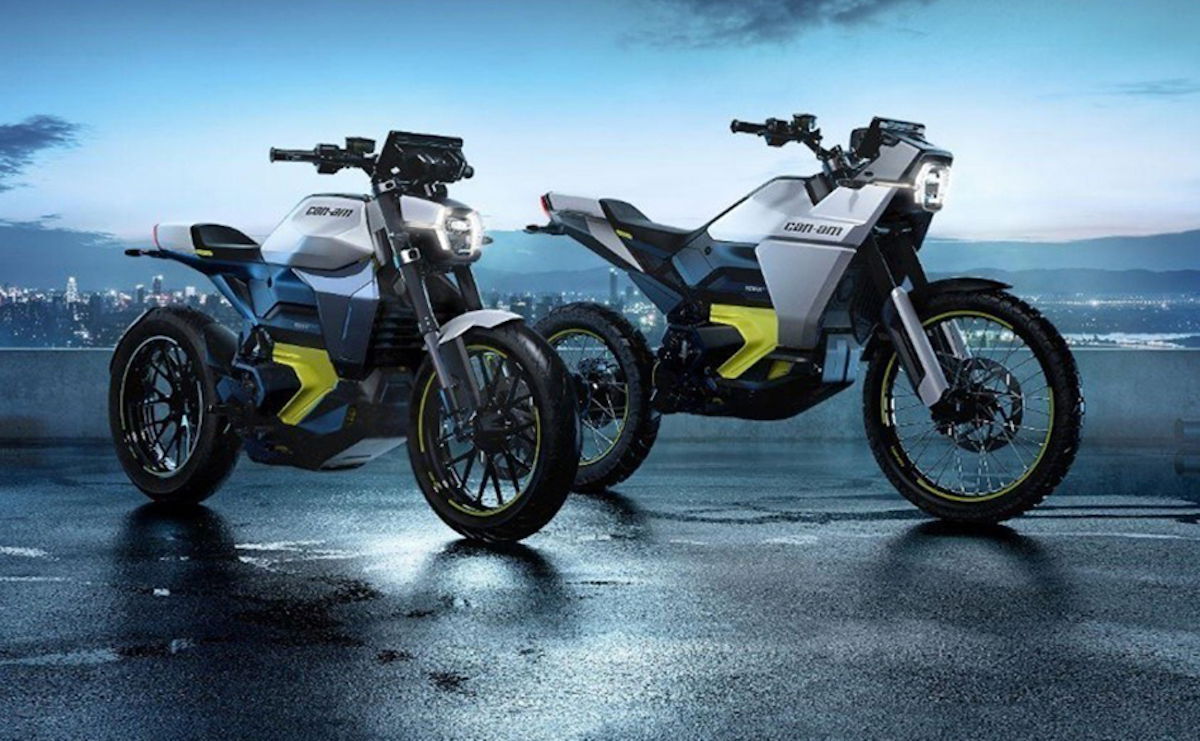Kawasaki appears to have revealed its keenly anticipated Electric, Hybrid models
Kawasaki ramps up preparations for the launch of its first electric and hybrid models with a demonstration run during the Suzuka 8 Hours weekend

Advanced stage prototypes of the first Kawasaki model to be powered by electric and another equipped with a hybrid powertrain made a surprise public debut over the weekend with a brief, low key demo run during the Suzuka 8 Hours.
Two of the more keenly anticipated new motorcycles due to come our way over the next 12 months, while Kawasaki has drip-fed snippets of information about long-term plans to electrify its range and showing off the occasional alternatively fuelled mule, exactly what form ‘Greener Team Green’ will be taking had been somewhat unclear.
However, after registration documents emerged last week appearing to confirm an imminent new MY2023 model using an electric powertrain and positioned in the lower end of the market - somewhere around the equivalent of 125cc and 300cc - a motorcycle matching that description was on display at Suzuka, with Japanese publication Autoby very handily being on hand to grab these shots and video [see below].

Taking part in a demo run down the home straight in front of the grandstand ahead of Sunday’s Suzuka 8 Hours race - which saw defending champions Kawasaki finish second to Honda - the motorcycle bears closest resemblance to the Z250 naked in terms of size and detailing.
While it’s difficult to tell exactly how far along the line of development this is in terms of the final look - or even know if this is indeed similar to what it will eventually look like - it’s fair to say the Kawasaki has evidently worked hard on the packaging with whatever battery tech lurking underneath is not immediately obvious.

A closer look exposes more rudimentary mechanics which, presumably, will be tied or covered up but given most electric models hitting the road right now make it very clear what’s powering it, Kawasaki have clearly done their homework.
Indeed, the model on display arguably leans towards ‘streetfighter’ territory with its stripped back fairing and clever design touches - such as high-set rear end - which could potentially be a distractionary trick of the mind or even play some part in squeezing those battery cells in.
As for what it is packing, well if this is indeed related to the model that showed up in those VIN documents last week, then the as-yet-unnamed motorcycle will be packing 11kW, so around 14bhp.

Is this a production-ready Kawasaki Hybrid sportsbike?
Also on show at Suzuka was the latest version of Kawasaki’s hybrid sportsbike, which it has been working on for a few years now.
While hybrid technology - which features a battery pack as well as an internal combustion engine - has taken off in the four-wheel industry, few have attempted to adapt it for motorcycling.
Indeed, given motorcycles are generally shrink-wrapped around the main component of an engine, squeezing a battery pack in there too creates a headache in terms of packaging. As a result, the ICE size has to be reduced, yet weight would increase, which in turn means that headache becomes a migraine in terms of keeping it stable and easy to ride.
Throw in the fact motorcycles are generally frugal versus their four-wheel counterparts and the argument for a two-wheel hybrid falls quite flat.
Nevertheless, Kawasaki appears determined to come up with a solution and a glance at the ‘HEV’ shows promise. Indeed, while the model was last seen ‘naked’ without its bodywork, Kawasaki have moulded a handsome design around it that combines the sensibilities of a Ninja 400/650 with the raucous ‘Sugomi’ influences of the H2.
Noticeably, the HEV has a very broad, sculpted front section to indicate this is where Kawasaki has found room to squeeze those battery cells in. While we can’t say what that will feel like on the road with the added weight up front, the design appears well integrated.
From side on, a longer wheelbase is noticeable, presumably to counteract the heavier front-end, while a closer look at some of the finishing touches - such as the mirror plates and visible lock for the under-seat compartment - would suggest this is a production-spec machine.
Perhaps the more interesting part of this story, however, is the short video Autoby managed to get of both Kawasaki bikes accelerating down the home straight. While the zip-wire like sound of the electric motorcycle is nothing new, turn the volume up when the HEV comes around and listen for the moment it goes from electric buzz to rumbling ICE…
鈴鹿8耐の前夜祭を、突然カワサキの電動バイクとハイブリッドモデルが駆け抜けました! Zとニンジャ??#鈴鹿8耐 pic.twitter.com/hxVvVkRoke
— webオートバイ (@webautoby) August 6, 2022
While this is all very well and good, the questions posed about Hybrid technology above remain. After all, why purchase it instead of a Ninja 650, for instance?
Well, since an increasing number of major cities are steadily phasing all ICE cars and motorcycles from their immediate centres, Kawasaki has reasoned that it will become universal over the next few years wherever you go, while those that have already put no-go zones in place will continue to expand the borders of where petrol-powered machines can ride/drive.
At a time when electric models that can viably be used over long distances or in areas where it is difficult to charge are few and far between, a motorcycle that complies with ultra-green zones in the city but still be used further afield might actually be an incredibly smart, well-timed move.

.png?width=1600)